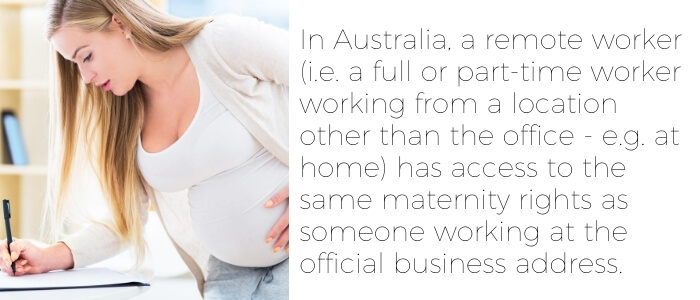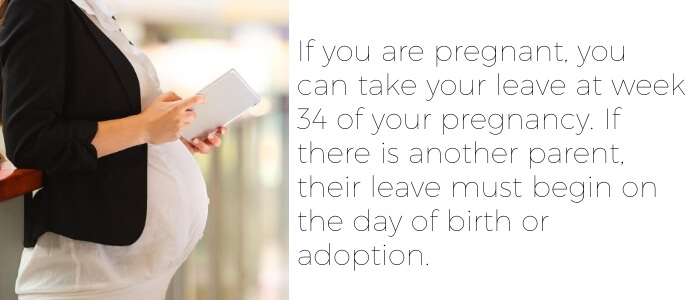
Around 55% of Australians report that they are slightly or significantly more productive working from home than in an office environment. Moreover, at least 78% of all those surveyed by McCrindle Research stated that they would like to spend at least some part of their working time at home. If you are currently working remotely and you are pregnant or thinking of having a baby, what rights can you expect, and how do these compare with those of mums working remotely in other parts of the world?
Factors Affecting Maternity Rights
The main factors that affect the quality of maternal care are: the total number of days you are permitted pre or post-delivery, the number of paid or unpaid days you are given, the percentage of wages paid daily, and whether or not leave is paid by the government or your employer. In Australia, a remote worker (i.e. a full or part-time worker working from a location other than the office - e.g. at home) has access to the same maternity rights as someone working at the official business address.
Unpaid Leave In Australia
In general, employees can take 52 weeks of unpaid parental leave, and they can request an additional 52 weeks. Those who are taking time off to care for an adopted child are entitled to two days unpaid pre-adoption leave to attend required interviews and the like. Although employers must adhere to government regulations, individual businesses usually have their own policies with regards to maternal and parental leave as a whole, with some being considerably more generous than others. Therefore, this is an issue that should be taken into account even at the job hunting stage.

Entitlement To Maternity Or Parental Leave
There are specific requirements for employees to be able to take parental leave. For instance, they need to have worked for their employer for at least 12 months in some kind of employment (including remote employment) on a full or part-time basis. In some cases, casual employment will suffice (i.e. if the working relationship exceeds 12 months and there is a reasonable expectation of continuing this relationship on a regular basis, excluding the pause brought about by the birth of a child).
What About Paid Leave?
Employees in Australia (including remote workers) who are the primary carer of a newborn or newly adopted child are entitled to 18 weeks’ paid leave (paid at national minimum wage rates). From the 1st of July, 2020, employees were permitted to claim paid leave for one set period and one flexible period. The set period lasts for 12 weeks (and must be taken within 12 months of the birth or adoption of a child) and must be taken continuously. The second/flexible period can last for up to 30 days, and can be negotiated between employee and employer. It usually commences when the set period ends, and must be taken within 24 months of the birth of adoption of a child.
When Can Your Maternity Leave Start?
If you are pregnant, you can take your leave at week 34 of your pregnancy. If there is another parent, their leave must begin on the day of birth or adoption. The 52 weeks of unpaid leave applies to either parent if both are working and are eligible (parents can only take eight weeks at the same time, though). If they wish to extend their leave for an additional 52 weeks, written notice must be given to the employer at least four weeks prior.

How Do These Rights Compare With Those In Other Countries?
Maternity leave varies greatly from country to country. The UK offers 52 weeks as well, but this can be taken starting 11 weeks prior to the due date, for instance. In countries like Spain, maternity leave entitlement lasts only 16 weeks, and in France this time period ranges from 16 to 26 weeks, depending on the number of children. In general, workers’ compensation rights are similar from country to country for remote workers. For instance, in countries like the U.S., remote workers are given similar rights for work injuries sustained remotely. The key to obtaining these rights is proving that they occurred within the due course of work. However, when it comes to maternity leave, countries like the U.S. are known for offering no national paid leave. This is to be contrasted with countries like Estonia, which offers 80 weeks of leave at full pay.
Remote workers in Australia have the same rights in terms of maternity leave as those working in offices. These rights include 52 weeks of unpaid leave and 18 weeks of paid leave at national minimum wage standards. Parents can extend the initial 52-week period, whenever they are eligible to do so and if they give due notice.
ABOUT OUR CONTRIBUTOR:
Sara is a freelance writer and editor
